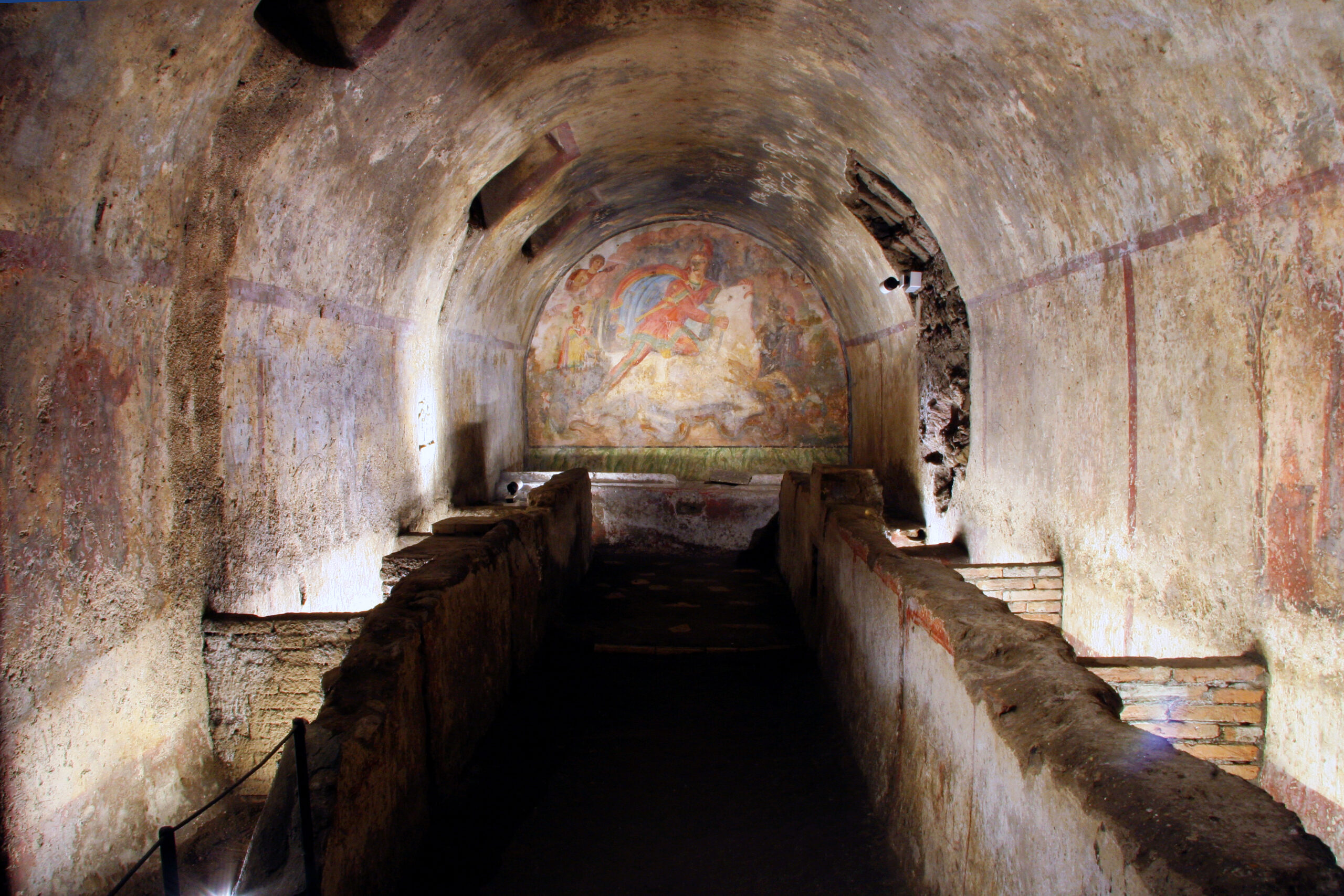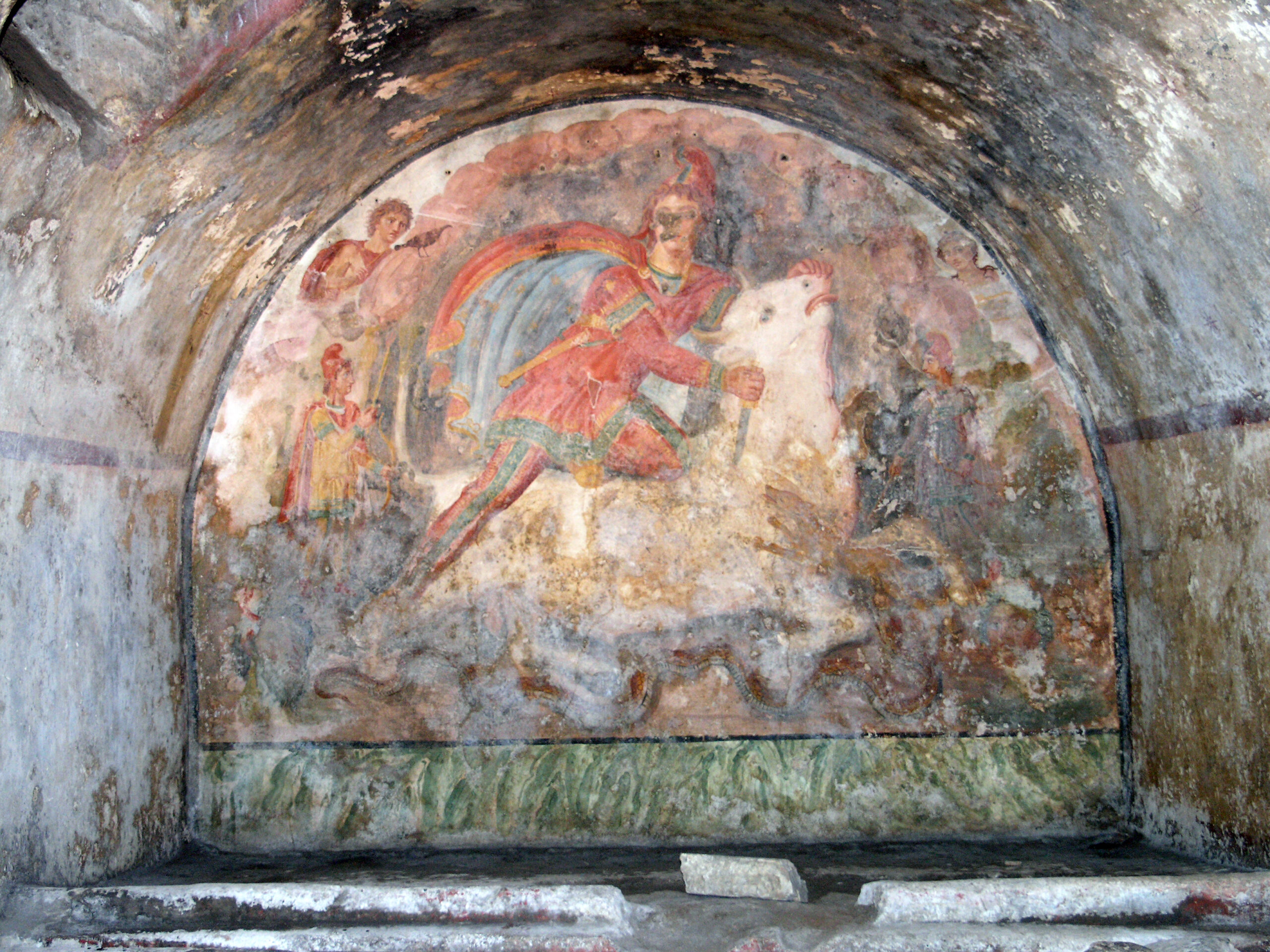After a long closure due to COVID and an extensive program of restoration, the Mithraeum of Santa Maria Capua Vetere in Caserta, in the southern Italian region of Campania, has reopened to the public.
Conservators from the Central Institute of Restoration of Rome (ICR) and the University of Molise analyzed the frescoed surfaces of the walls and the microclimate within the Mithraeum as well as in rooms adjacent and above the sacred space. They installed a new energy-efficient lighting system which does not alter the temperature and humidity of the rooms or damage the integrity of the pictorial surfaces. There is also a new information system in the antechamber to the main cult room which gives visitors background on the religion, the Mithraeum and on the recent analyses of the frescoes.
The Mithraeum was built in a natural cavern at the end of the 1st century or beginning of the 2nd century A.D. It is the oldest Mithraeum in the West and one of the most important Mithraic sites in the world. The religion originated in Persia and was brought to southern Italy by merchants and traders from the East doing business at the port of Puteoli. Between the 2nd and 3rd centuries, Mithraism evolved in the West from its Indo-Persian origins as a solar religion into a mystery cult with adherents throughout the empire, mostly soldiers, slaves and gladiators.
Capua was renowned for its gladiatorial school (its most famous alumnus was none other than Spartacus), and Mithraism took hold very early here. The cavern is located near the city’s great amphitheater that was second in size only to the Colosseum in Rome and was built around the 1st century A.D. Mithras makes an appearance on the amphitheater itself, as a bust carved onto the keystone of an arch in the arcade. The Colosseum numbered its entrances for traffic control; the Campanian Amphitheater identified its entrances by deity. Mithras is ranked with the likes of Jupiter, Juno, Minerva, Diana, Apollo, Mercury and Ceres on the amphitheater’s keystones.
The Mithraeum is underground. Visitors descend a flight of stairs into a narrow corridor that leads to a preparation room on the right, and the main cult chamber on the left. The Mithraeum is a rectangular room about 40 feet long and 10 feet wide. The long walls have benches carved out of the stone where the adherents sat. At the end of the room is an altar with a brilliantly colored fresco depicting the tauroctony, the slaying of the bull by Mithras. On the eastern wall is a fresco of the Moon holding the reins of a biga (a two-horse chariot) pulled by one black horse and one white one. The western wall features a bas relief of Cupid and Psyche. The ceiling is painted yellow and is decorated with red and blue glass paste stars. Originally the side walls would have been completely covered in paintings, but today only two torch-bearers and depictions of the stages or ritual purification of a new initiate remain.
The Mithraeum was found during construction in 1922. It was opened to visitors in 1937. Now that it has reopened, the conservation needs of the wall paintings are being prioritized, so only a maximum of 20 visitors a day will be allowed, and only for 20 minutes — 10 minutes in the antechamber where the information panels are, 10 minutes in the worship chamber.

